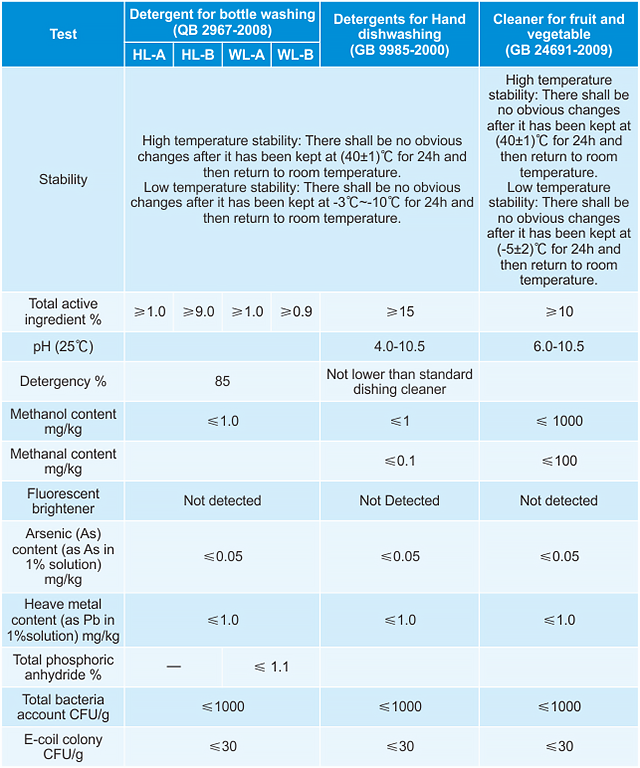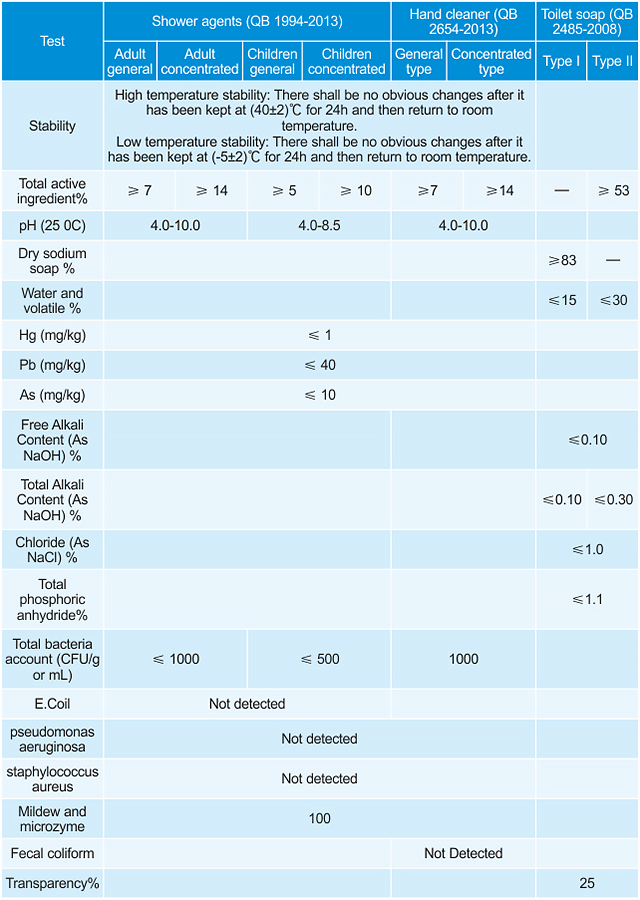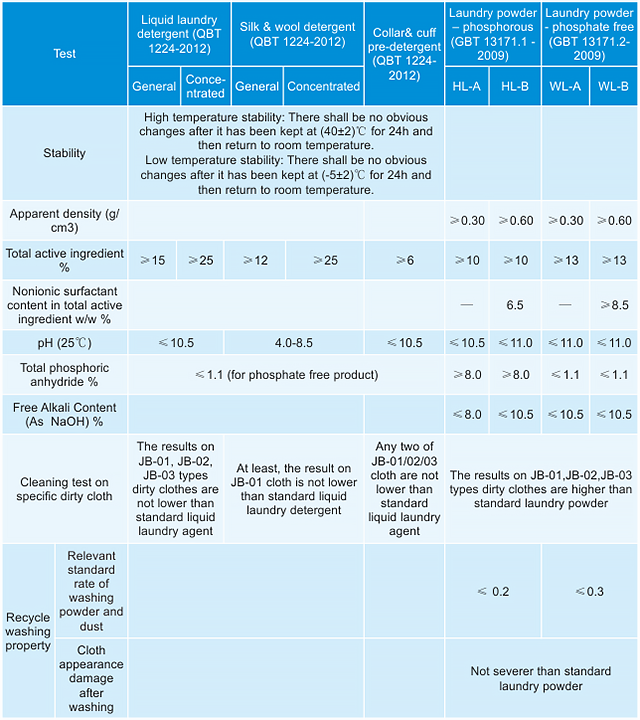What regulations/standards shall soap and detergent products comply with in China mainland?
What tests shall be done when imports detergent/cleaner into China?
How to import detergent legally and smoothly?
Summary
In China, detergents/cleaners should comply with various standards, including China national standard (GB) and industrial standard (QB). The amount of detergent standards exceeds twenty, but not required to comply with all standards. Due to cleaning categories (A, B and C.) and product functions, appropriate national standards and industrial standards could be identified. Detergents/cleaners company can conduct testing as standard required to evidence their product comply with the GB or QB.
Besides national standards (GB) and industrial (GB), other regulatory requirements will be triggered by their claims, targets, chemical classification and China chemical inventory.
Claims
If detergents/cleaners have a special function or application scope, it shall comply with additional regulation, as following table shows.
Detergent function | Authority | Relevant regulation |
Disinfection | NHFPC | |
Cosmetic | CDFA | Regulations Concerning the Supervision and Administration of Cosmetics |
Food related | CDFA |
Classification
Detergents/cleaners shall also comply with chemical regulations, such as China GHS. If the classification of product is hazardous, Safety Date Sheet (SDS), precaution label, 24 hours emergency number and hazardous chemical registration should be required.
Please click here to get more information about China GHS.
China chemical inventory
Besides China GHS, detergents/cleaners shall comply with China REACH (MEP Decree No.7):
Regulation | Inventory | Does the chemical exist in the inventory? | Administrative approval |
MEP Decree No.7 | Inventory of Existing Chemical Substances Produced or Imported in China (IECSC) | No | China New Chemical Substance Notification |
Yes | NA |
Categories
In accordance with GBT 26396-2011 - Technical specification for safety of soap and detergent, detergents/cleaners shall be classified as 3 categories:
Category A: Detergent/cleaner used for food, utensils and food relevant facilities, including tableware cleaner, vegetable and fruit cleaner and so on.
Category B: Detergent/cleanser used for personal hygiene, such as toilet soaps, shower gels and hand washes etc.
Category C: Detergent/cleaner used for other objects, e.g. washing powders, washing gels, washing soaps, toilet bowl and ceramic tile cleansers, detergents for kitchen, glass cleansers, carpet detergents, furniture detergents, fabric softeners and animal shampoos.
Detergents/cleaners will be regulated by different China national standards according to categories. We summarised current national standards corresponding to each category in following table for your reference.

Category A: Food related cleanser
The food related cleansers are defined as the objects used for cleaning food, tableware and food contact tools, equipment, containers and packaging materials. The food related cleaner are regulated by China Food and Drug Administration (CFDA). The raw materials of food related detergent must comply with relevant national standards. The raw materials are classified as 3 Tiers:
Tier 1: The detergent materials can be used for cleaning food (including fruits, food raw materials and semi-finished food), tableware and food processing equipments. (121 types in total)
Tier 2: The detergent materials only can be used for cleaning tableware and food processing equipments.
Tier 3: The detergent materials only can be used for food processing equipments.
Note: The cleaner that contacts with food directly only can use Tier 1 materials.
When food related detergents are manufactured or sold in China, they shall be tested to prove the product quality is over the national standard. As GB14930.1-2015 - National Food Safety Standard-Detergent required, the food related cleaner should conduct following testing in China qualified/certified laboratories:
- Arsenic (As) content
- Heave metal content (as Pb)
- Methanol content
- Methanal content
- Total bacteria account (CFU/g or CFU/mL)
- E-coil colony (CFU/g or CFU/mL)
- Stability
- Active ingredient content in total
- Fluorescent brightener
General bottle phosphorous cleaner and Concentrated bottle phosphorous cleaner are named “HL-A” and “HL-B” while General bottle phosphate-free cleaner and Concentrated bottle phosphate-free cleaner are named “WL-A” and “WL-B”.
Please see the detailed testing items and requirements, as following table shows:

Category B: Personal hygiene cleaner
The main types of personal hygiene cleaner are shower agent (including gel, cream and solid), toilet soap and hand cleaner.
For bath agent and shower agent, detergents/cleaners could be divided into 4 types according to product concentration and their users (Reference to QB 1994-2013 Bath agents and shower agents):
1. General type for adult
2. Concentrated type for adult
3. General type for children
4. Concentrated type for children
As QBT 2654-2013 Hand Cleaner states, hand cleaner is similar with shower agent, it can be classified as General type and Concentrated type.
Dividing by composition, there are two toilet soap types in China (QB 2485-2008 Toilet soap):
Type I: The toilet soap contains sodium aliphatate and aids.
Type II: The toilet soap contains sodium aliphatate and/or other surfactants, functional additives and aids.
Please see the detailed testing items and requirements, as following table shows:

Category C: General object cleaner
Cloth cleaner
Generally, the classifications of cloth cleaners are liquid detergent, and laundry powder. And the laundry powder can be sorted by phosphate.
There are three type liquid detergents for fabric, as QBT 1224-2012 Liquid detergent for fabric shows:
1. Liquid laundry detergent: used on textile and knitwear
2. Silk & wool detergent: used on silk, feather filled product, fur and cashmere product
3. Collar & cuff pre-detergent: used on heavy-dirty part, such as collar and cuff
In addition, liquid laundry detergent and silk & wool detergent are separated to general type and concentrated type.
General phosphorous laundry powder and general phosphate-free powder are named “HL-A” and “WL-A” while concentrated phosphorous laundry powder and concentrated phosphate-free powder are named “HL-B” and “WL-B”.
Please see the detailed testing items and requirements, as following table shows:

Carpet, hard floor, glass, toilet bowl and ceramic tile cleansers
As the application forms, carpet cleanser can be divided to 2 types (Refer to QB 4526-2013 Carpet cleanser):
1. General type: Carpet cleaning products used for cleaning ordinary stains on the carpet. Usually the general carpet cleanser is diluted with water and then used for cleaning the carpet.
2. Heavy-duty type: Carpet cleaning products used for cleaning special stains or stubborn dirt on the carpet. Usually it is directly smeared or sprayed on the carpet with the original fluid for cleaning local stains on the carpet.
Toilet bowl and ceramic tile cleaner should comply with standard GBT 21241-2007. This standard regulates that the biodegradation degree of surfactant in detergent shall be not less than 90%. And the surfactant must be eco-friendly when biodegradation. The types of this detergent can be classified by application object:
General type- appropriate for all kinds ceramic tile products
Toilet bowl type- appropriate for toilet bowl and urinal
Please see the detailed testing items and requirements, as following table shows:


